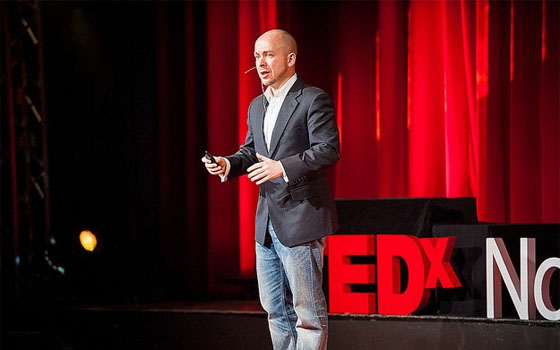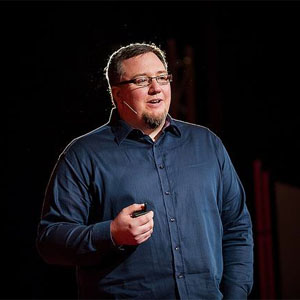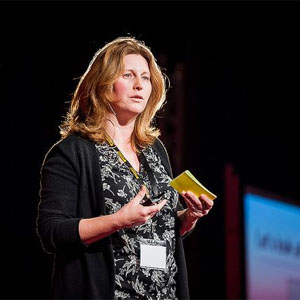For the second year in a row, the TED banner flew enthusiastically over Dalhousie.
TEDxNovaScotia, an independently organized TED event in partnership with the Dalhousie Student Union and Dalhousie, was all about sharing inspiration, innovation and ideas. Volunteer-driven and organized, the sold-out day of talks at the Student Union Building last Sunday brought students, academics, activists and members of the community together to question the current definition of education, and ask what it could look like in the future.
This sense of collaboration, essential to the popularity of the TED concept, permeated every aspect of the event, making it an ideal environment to discuss education. As Dalhousie Student Union President Jamie Arron reminded the crowd, “what we learn as communities is as important as what we learn as individuals.”
For Arron, TEDxNovaScotia provides a forum where individuals can “sit without judgement in the face of ideas that we might otherwise find uncomfortable.”
The roster was an eclectic mix of individuals with something to share. Many of the speakers and performers have close ties to Nova Scotia, and all were eager to share with the crowd.
“For me, this is a really exciting gig,” said Ben Caplan, award-winning Canadian musician and King’s grad. “For me, songwriting is a way of getting my ideas into the world and it’s great to be playing to an audience that is there to absorb ideas.”
Dalhousie contributions
Several of the speakers at the event had Dal connections.
Robert Huish, assistant professor in Dal’s Department of International Development Studies, is a firm believer in providing a learning environment that allows students to engage in issues they believe in.
For Dr. Huish, the biggest danger facing post-secondary education today is the threat that budget cuts pose to the ability to foster audacity in students. He is concerned that funding trends are resulting in increased class sizes and a reliance on online learning that lacks real engagement.

“There is no textbook that tells you how to make complex problems go away,” he said.
Looking to the Civil Rights movement in the 1960s, the Orange Revolution in the Ukraine, Tahrir Square and, closer to home, the recent student-organized protests in Quebec, Dr. Huish implored the crowd to remember that universities are instrumental in helping “students to find their audacity and make change.”
Ian Taylor plays a different role than Dr. Huish in the university community. Taylor is a manager of technical operations for Dalhousie Medicine New Brunswick and works with immersive videoconferencing technology to close geographical distances between people learning together. (In this case, between medical students, faculty and staff in Halifax and Saint John, as well as elsewhere in the Maritimes.)
 Taylor faces two incompatible truths when he designs computer systems: that we are entrenched in classroom learning, and that communicating through technology creates barriers.
Taylor faces two incompatible truths when he designs computer systems: that we are entrenched in classroom learning, and that communicating through technology creates barriers.
His solution? Make the technology disappear.
“Distraction is the enemy of engagement,” he explained, in that it takes you out of the moment, changes meanings and creates disbelief. “We need to suspend the disbelief.”
To do this, Taylor is working to extend the reach of the physical classroom by creating the perception that people learning in different places are in the same environment. “With new technology, we can bring people together; once we understand perception, we can manipulate it.”
Teaching tools across disciplines
As engineer in residence for tidal power research at Dalhousie, Sue Molloy works to educate communities on the potential of tidal power. In her classroom, Molloy is working to show students the importance of balancing the big picture with narrow details to find solutions to problems at the intersection between engineering and the environment.
Molloy is working to break down the barriers between communities that have problems and the engineers that are needed to find the solutions. “At this point,” she says, “we are relying on other individuals to talk to people outside engineering.”
 “We need to engage people to show them that they can be a part of the process, and at its core, this comes down to respect.”
“We need to engage people to show them that they can be a part of the process, and at its core, this comes down to respect.”
Molloy is talking about respect between academic disciplines – enhancing the engineering education with the communication skills taught in arts programs and the big ideas of the sciences. In her first year Engineering and Environmental Sustainability class, Molloy’s students engage in other disciplines by reading the classic philosophy paper “The Tragedy of the Commons” by Garret Hardin, visiting an art gallery to view a relevant exhibit and engaging in debates.
The bottom line for Molloy is that disciplines, particularly engineering, should hold their techniques up to criticism by those outside their silo. This gives students “a chance to learn how to listen and respect opposing views in a way that will impact how they work with people in the future and how to contextualize their work.”
All of the TEDxNovaScotia talks will be posted soon to www.tedxnovascotia.ca. You can also see more photos from the event at the TEDxNovaScotia Facebook Page.

